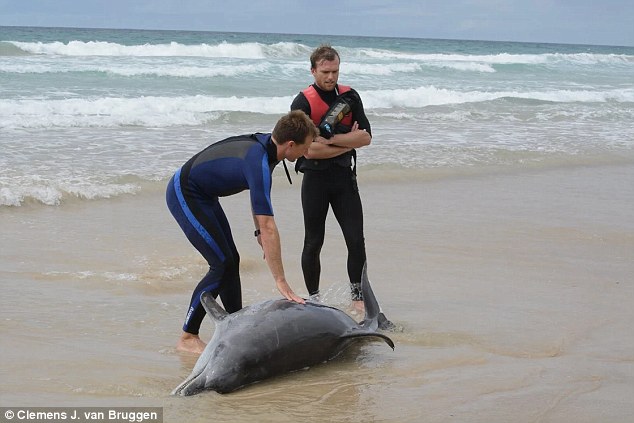
It is not known how long the female bottlenose dolphin had been dead when it washed ashore at Broadbeach on Sunday without any scarring or visible injuries.
'Sea World will conduct a post-mortem on a dolphin which washed up at Broadbeach over the weekend. We have also sent away samples in an attempt to identify a cause of death,' a Sea World spokesperson told Daily Mail Australia.
A three-month pregnant female repeatedly stranded at Cape Moreton this month.
The 15-year-old suffered skin abrasions from rolling around on the shoreline.
That dolphin - now nicknamed 'Sandy' - is in veterinary care, with handlers hoping to release the expectant mother once she has recovered and her pod is found.
They are also hoping test results from the US will shed light on why she washed ashore, Mr Long said.
A third dolphin with a fishing line embedded in its tail was found dead at The Spit last week.
'It probably had a slow death, unfortunately,' Mr Long said.
'It was very thin, very emaciated and the line had cut very deeply into its tail.'
Dr Catherine Kemper, a senior researcher of mammals at South Australia Museum told Daily Mail Australia that dolphin strandings are common and can often be attributed to injury and disease.
'We see a lot of dolphin strandings and many dolphins are either hurt or die due to disease. If they are young dolphins they could have lost their mother,' she said.
Dr Kemper added that although marine experts remain hopeful, autopsies do not always offer answers into the death of dolphins.
'Unless the dolphin's cause of death is obvious, post-mortem examinations do not always offer answers as there are many dolphin diseases that we know very little about,' said Dr Kemper.



Reader Comments
to our Newsletter